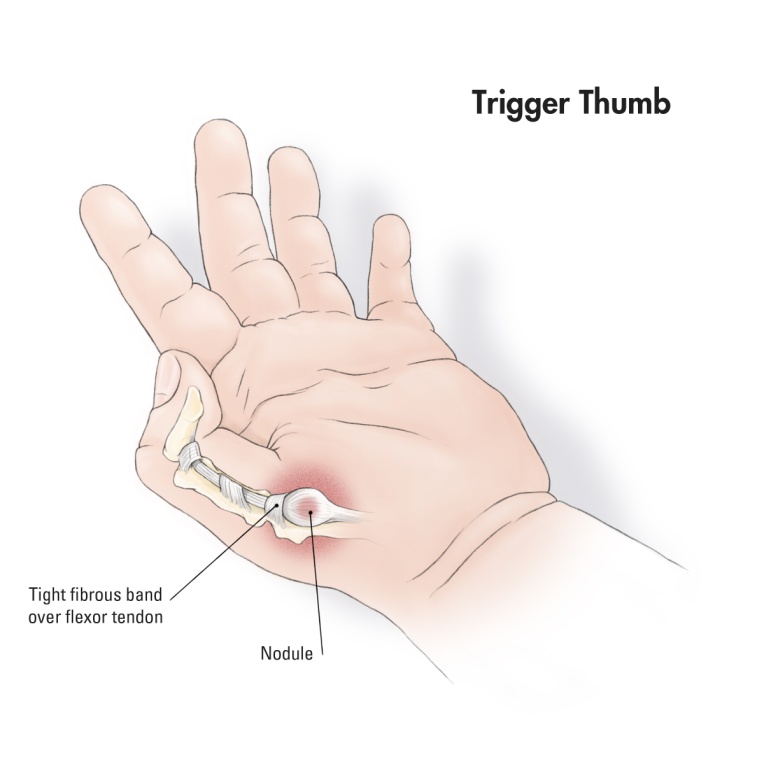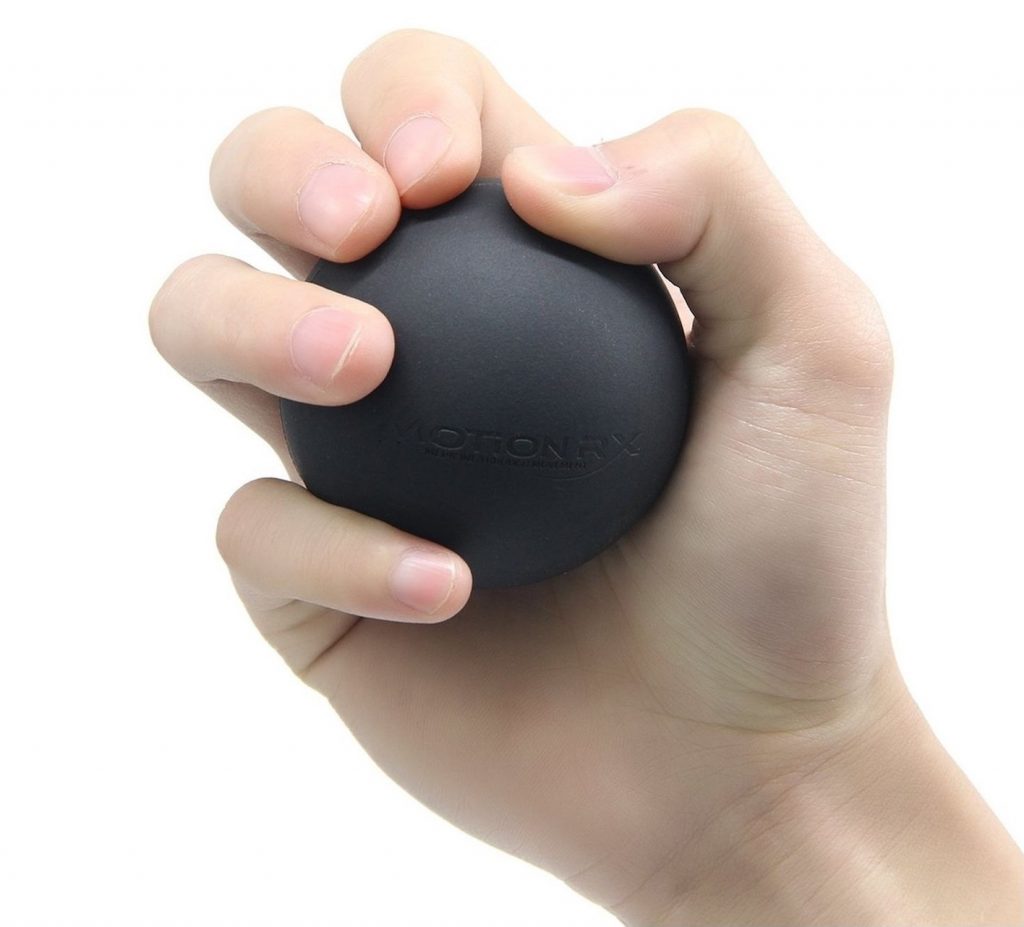
Trigger thumb is a common condition affecting approximately 200,000 people in the United States. It is characterized by a popping or clicking sound felt and heard when the affected finger is straightened, some degree of stiffness, and a bent or crooked position of the affected thumb.
Understanding trigger thumb
Under normal conditions, the tendons (which connect your muscles to the bone) glide easily through the sheath (the tissue that covers the tendon) with every movement. However, with trigger thumb, the tendons become inflamed, affecting the gliding motion and impairing the thumb’s range of motion.
Prolonged irritation can result in thickening of the tendon and even lump formation. The bending motion pulls the swollen tendon through a narrowed sheath which is why it pops or clicks upon movement.
Trigger thumb may be painful for some patients and painless for others but in most cases, the symptoms are worst in the morning. There’s also a catching sensation which worsens with rest and relieved with regular movement.
Common causes of trigger thumb
While the exact cause of this condition is unknown, there are certain instances that might lead to trigger thumb such as:
- Pre-existing inflammatory conditions like gout and rheumatoid arthritis
- Repeated firm and strong gripping (e.g. grasping vibrating power tools)
- Forceful use of the thumb
- Any activity that adds strain to your hand like playing the guitar for hours
Women who are between 40-60 years old also have a higher risk of developing this health problem.
How do you prevent trigger thumb?
While you cannot control certain risk factors such as age and gender, you can limit activities which strain the tendons of your thumb. However, if these activities cannot be avoided, make sure to protect yourself by wearing padded gloves and protective gear.

A Lacrosse Ball can help overcome pain caused by Trigger Thumb
Home management for trigger thumb
The goal of treatment is to limit the discomfort associated with the condition and to ensure painless and full movement of the affected thumb. However, depending on the severity, your doctor may recommend surgery to correct your injury. Corticosteroid injections have also been proven effective to relieve symptoms in 90% of trigger finger cases.
Don’t miss the following home remedies for trigger thumb:
- Rest the affected finger and avoid doing any activity that aggravates the pain and discomfort. You may wear a thumb splint to keep your thumb in a neutral position and limit unnecessary movement especially when you sleep at night. Another purpose of using a brace or splint is to prevent the possibility of re-injury which could happen if you unconsciously clench your fist while sleeping.
- Take NSAIDs. Your doctor may prescribe non-steroidal anti-inflammatory drugs (NSAIDs) like ibuprofen or naproxen to help relieve the swelling. Avoid taking more than what is recommended and inform your doctor if there’s still no relief of symptoms.
- Apply a cold pack to the affected thumb for 15 minutes at a time. You can also use frozen fruits or vegetables as an alternative if an ice pack is not available. Wrap the ice in a towel before putting it on your skin.
- Perform stretching exercises to strengthen not just your thumb but your other fingers as well. These can also help maintain mobility and relieve stiffness. Keep your exercises gentle and stop immediately when you feel pain. Ask your doctor for advice on the right exercise suitable for your condition.
- Enlist the help of an occupational therapist to help make your tasks at home and at work easier and more manageable despite your condition. This is particularly important if you recently underwent a surgery because you might find doing even the simplest activities quite challenging.
Stretching exercises you can do
Although these exercises are generally safe for patients with trigger thumb, ask your doctor for clearance if your condition can already tolerate the following basic stretches:
- With your palm flat on any hard surface, lift the thumb slowly and hold it for two seconds. Gently lower it back down then do the same for the other fingers.
- Wrap a rubber band around your hand then open and close your fingers against the resistance. Repeat as often as you can and stop when you feel any form pain or discomfort.
- Hold a stress ball in your affected hand and squeeze it for five seconds before releasing.
- Spread out your fingers then clench them and form a fist. Repeat for 10 times.
A majority of patients diagnosed with trigger thumb recover after resting and taking medications. While this condition may be inevitable for some people due to the nature of their occupation, you can still reduce the risk by observing proper techniques when working or wearing protective equipment like gloves. Improving the strength of your fingers through exercise can also help in preventing trigger thumb.


















Follow Us